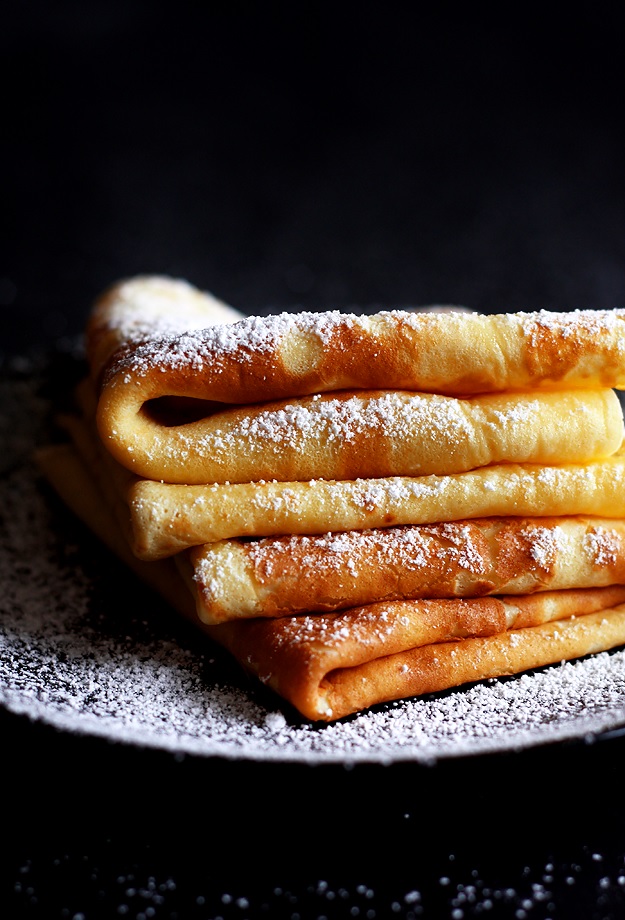
Everyone knows the delicious French crepes, but in Austria, we have our own kind. The Austrian type is closer to the French crepes than the thick American Pancakes and yet a little thicker than the French version.
At home, this is is a dish, traditionally served for lunch – not for breakfast, not for dinner. But honestly: They make a great breakfast too. They are either eaten for dessert or main dish. I totally prefer the latter approach. And since I have pancake batter in my genes, Palatschinken is by far one of my favorite dishes – filled with apricot jam (or banana-nutella, yeah).
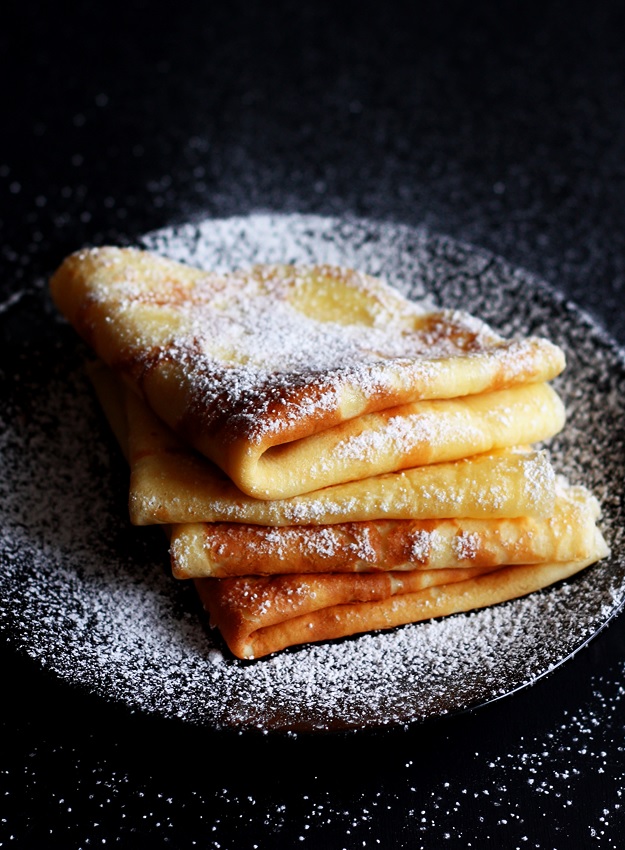
Palatschinken are ready within minutes, all kids love them and so I grew up eating a lot of Palatschinken. Traditionally, they are kind of thicker than the very thin French crepes, filled with apricot jam and then rolled (jelly-roll like). And that’s the way they are served in typical Austrian restaurants (“Wirtshaus”).
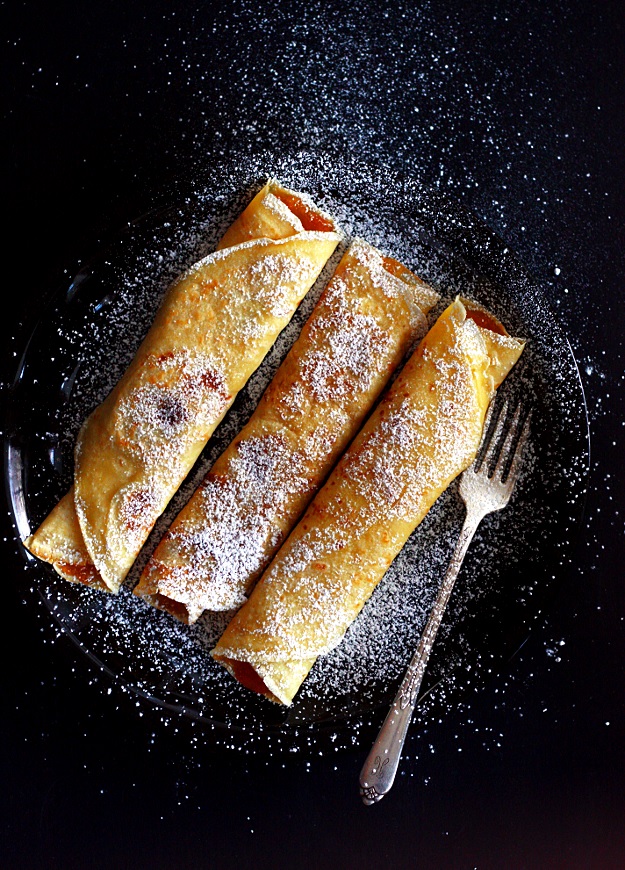
Austrian Palatschinken are filled with apricot jam, then rolled like in this picture.
Besides with apricot filling, they are often served with a chocolate-walnut filling or sweetened quark/fresh cheese (“Topfenpalatschinken”). But the important thing is, that you would never see them folded like crepes – so please don’t judge me for those pictures where I show them … aaahmmmm … folded like crepes. I just like their folded look, but still: They should be rolled!
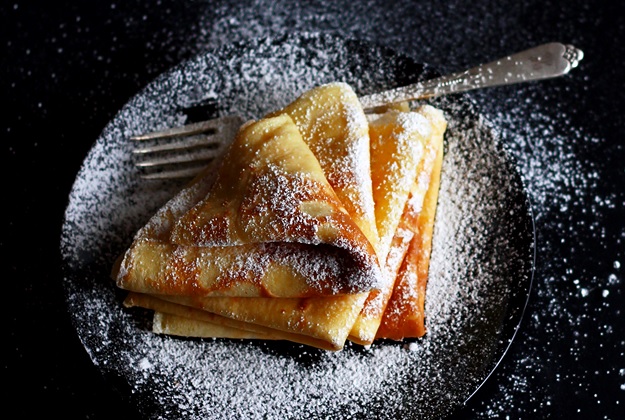
Since this recipe is for neutral tasting Palatschinken, you can also add a savory filling. With a mix of tomatoes, mozzarella and fresh basil you can’t do wrong.
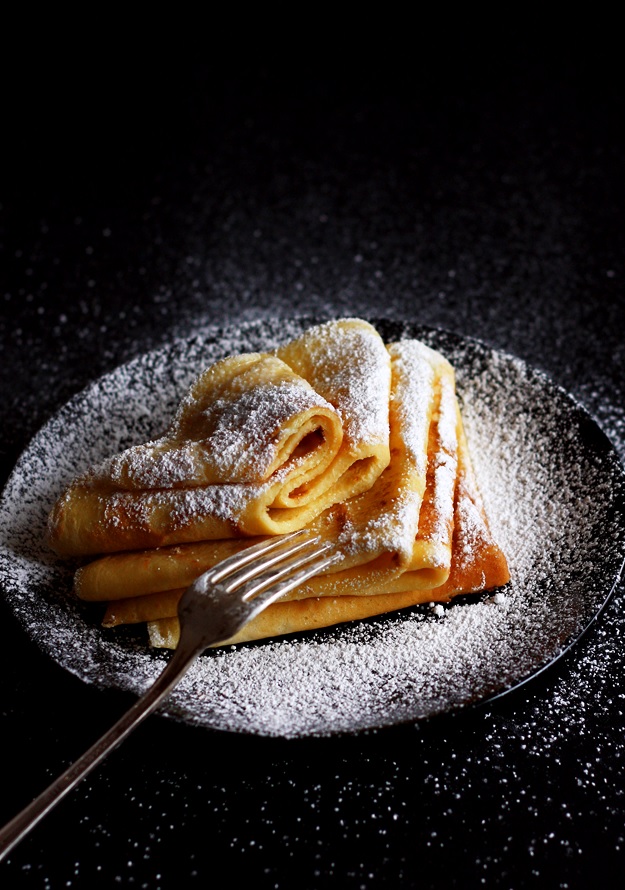
Palatschinken recipe
The recipe is very easy and forgiving and usually you should have all the ingredients on hand: eggs, milk, flour and salt. Some chefs add vanilla sugar (¼ teaspoon vanilla extract) or 1 tablespoon of butter – but that’s really optional.
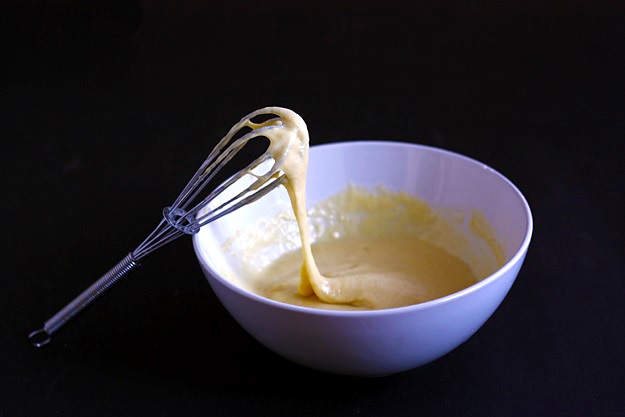
First, prepare a thick batter to avoid lumps.
Whisk the eggs in a medium bowl until lightly beaten. Add salt and about 1/3 cup (80 ml) of the milk (just eyeball) and beat until combined. Add the flour and whisk until you get a smooth batter. The batter should be so thick that you can barely whisk it—the thicker the batter, the fewer lumps you will have (see pic above).
If the batter is too hard to stir, add a little of the remaining milk while whisking.
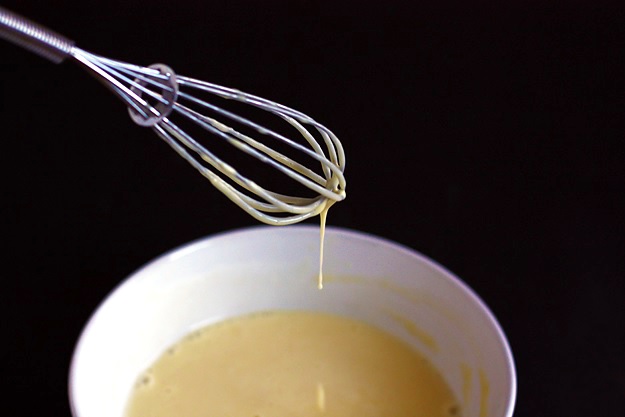
Gradually add the milk to the thick batter to thin it.
After you’ve whisked the batter smooth, slowly add the remaining milk while continuing to whisk the mixture (This is my mother’s secret for smooth Palatschinken).
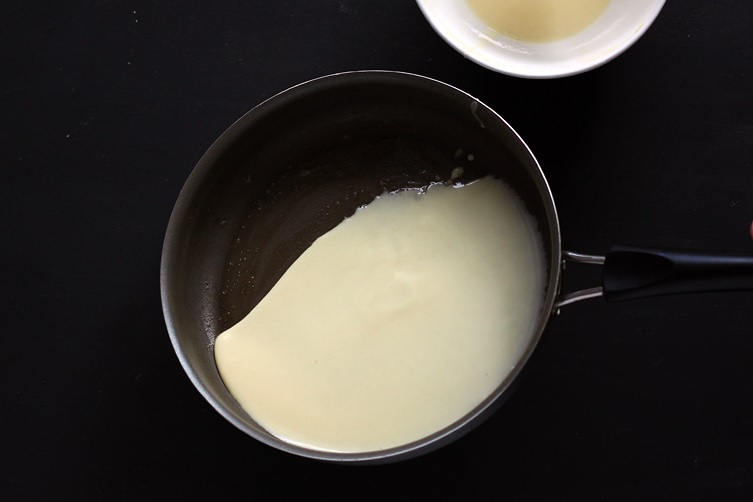
Add crepes batter and swirl the pan.
Heat an 8-inch (or larger) nonstick pan over medium heat. Add 1/2 teaspoon of butter or ghee, or oil as needed, and spread it carefully with a spatula to coat the bottom of the pan evenly. This is important; otherwise, the butter will disturb the batter.
Pour 1/3 cup of the batter (for an 8-inch pan, more for larger pans) into the center of the pan and swirl the pan to spread the batter evenly.
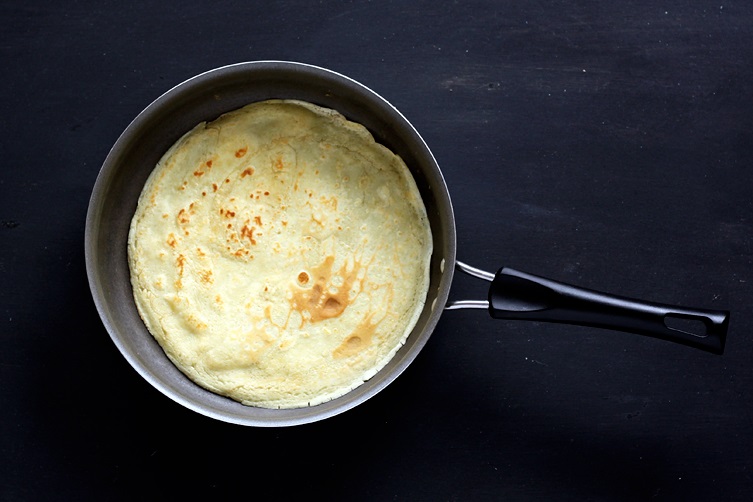
Flip the palatschinke (crepe).
Once the bottom side is golden in color, flip it with a spatula and cook the other side for about 15 seconds.
Invert it onto a plate so that the browned side is touching the plate and the pale side is face-up. This way, the nice looking side will be outside when you roll it.
Repeat with the remaining batter, adding 1/2 teaspoon of butter or oil for every crepe. If the batter thickens over time and makes it harder to spread the batter in the pan, add some milk. You can keep the ready pancakes warm in the oven at a low temperature.
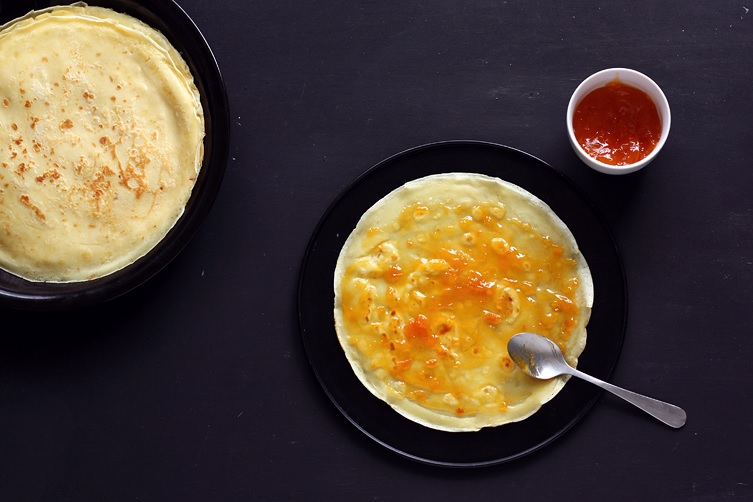
Spread crepe with apricot jam.
Spread the apricot jam on the Palatschinken …
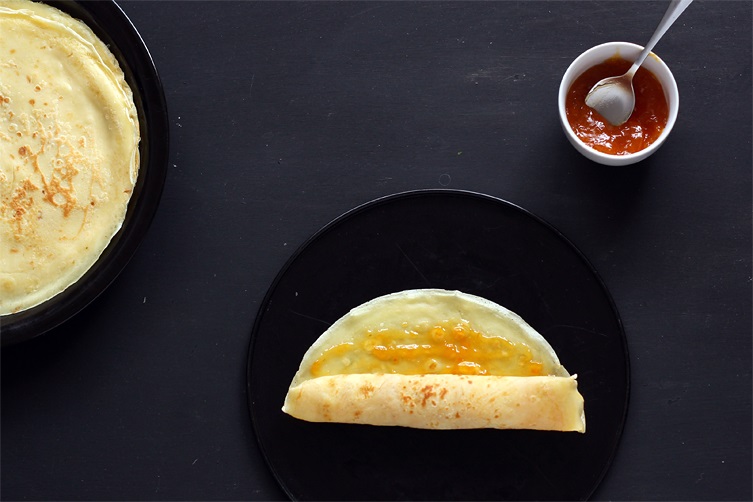
Roll them.
and roll them from one side to the other.
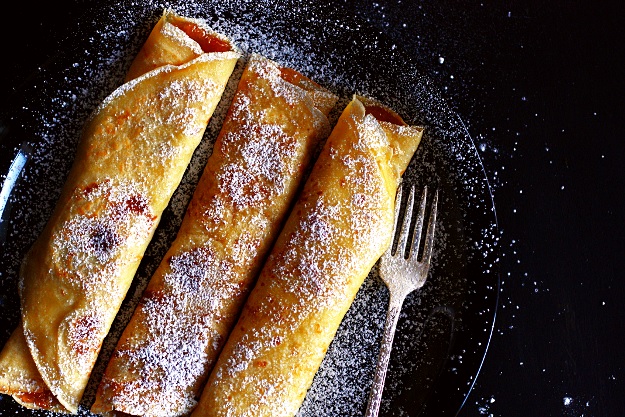
Dust the Palatschinken with confectioners’ sugar and serve with a fork and spoon, using the spoon as a knife, the traditional way of serving them. Enjoy!
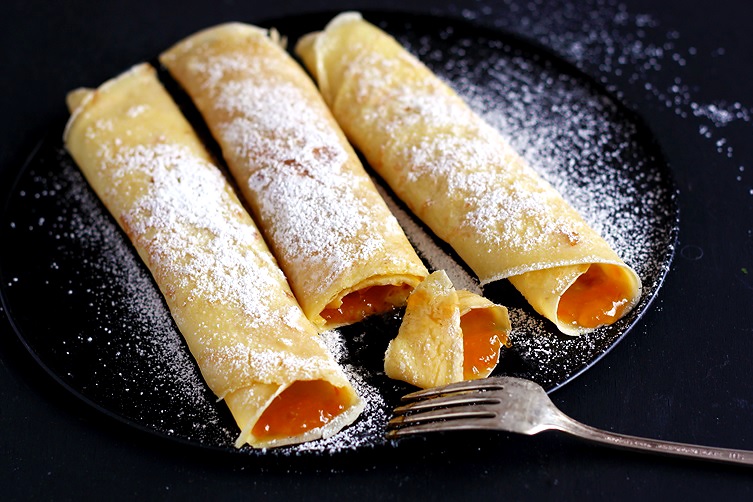
You can also find the recipe in the Small Batch Column on Food52.
Update 04/23/2018: I added some additional pics as well as some additional explanations in the instructions.
Ingredients
- 2 large eggs
- 1 cup milk (8 fl. oz, 240 ml)
- 1 cup all purpose flour (3 ½ oz, 130 g)
- 1/4 teaspoon fine salt
- 1/4 teaspoon vanilla extract (optional, omit for savory fillings)
- Butter, ghee or neutral tasting oil for coating the pan
- Apricot jam for the filling
- Confectioner‘s sugar for dusting
Instructions
- Whisk the eggs using a hand whisk in a medium bowl until lightly beaten. Add salt, vanilla extract (if used) and about 1/3 cup (80 ml) of the milk (just eyeball) and stir until combined.
- Add flour and whisk until you get a smooth batter. The batter should be thick and tough so you can barely whisk it. Add a little of the remaining milk if it is too hard to stir. Lumps have no chance in thick batters.
- Gradually add in the remaining milk while whisking.
- Heat an 8-inch (or larger) nonstick pan over medium heat. Add 1/2 teaspoon butter (or oil) and spread it carefully with a spatula to coat the bottom of the pan evenly. This is important, otherwise the butter will disturb you when swirling the pan for distributing the batter.
- Pour 1/3 cup batter (for an 8’’ pan, more for larger pans) into the center of the pan and swirl to spread evenly. Once the bottom side is golden in color, flip it with a spatula and cook the other side for about 15 seconds. Invert onto a plate - the browned side should touch the plate, you should see the pale side. This way the nice looking side will be outside when you roll it.
- Repeat with the remaining batter, adding 1/2 teaspoon of butter/oil for every crepe. If the batter thickens over time, add a little milk. You can keep the ready ones warm on a plate in the oven at low temperature.
- Spread each Palatschinke with Apricot jam (or other filling) and roll it from one side to the other. Dust the Palatschinken with confectioner's sugar and serve with fork and spoon (the spoon serves as a knife). Enjoy!
Did you follow this recipe? You could share your result here. All you need to do is take a picture with your smartphone and send it to [email protected]User Ana did a Palatschinken experiment: "I first tried the basil/tomato/mozzarella suggestion which was great. This morning I decided to try a sweet version, which ended up like an experiment as I had coconut milk in the fridge! So, I also added a couple of peaches that I cooked in coconut oil. Once the crepe was ready I covered it with a thin layer of caramel spread, then put the peach slices, and added some vanilla ice cream in top. The flavour is smooth actually, it is nothing rich. Palatschinken are a great base for all sorts of combinations indeed. Thanks for sharing the recipe!"

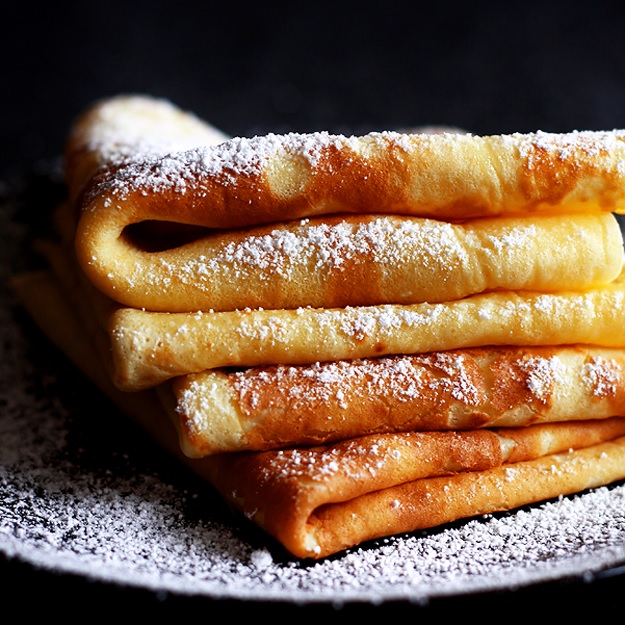
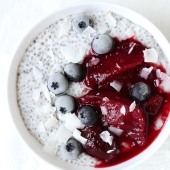
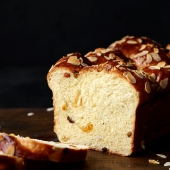
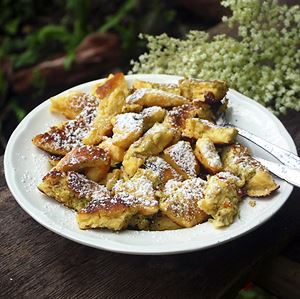
beautiful presentation! I love how simple this recipe is and how simple yet artful your pictures are!
Thanks Savita! I think simple recipes are often the best ones ;-)
When I was a little girl, everytime I stayed at my Grammys she made these for me in a cast iron pan. I LOVED them back then and I still do.
Hi Susan,
Same here. I love them! Still. Always will :)
Thanks so much for letting me know! Ursula
These look so delicious! I can’t wait to give these a try. I usually always made either thin crepes, or fluffy American pancakes. But I like that this is something new. Thank you for sharing.
Hi Tina,
thanks! Hmmm yes, I’m one of these persons, who thinks there can never be enough different kinds of pancakes. Enjoy them!
Yummy- those look great- especially rolled up with apricot jam! I canned up soooo much jam this past summer that this would be the perfect dish to use some of it!
-Kelsey
http://www.alittlerosemaryandtime.com
Thanks Kelsey! I agree, that’s the best thing you can do with apricot jam ;-)
They are also delicious in chicken “noodle” soup. Roll em up, slice into thin strips, and use instead of the noodles.
Hey Steven,
I thought no one outside of Austria is eating them this way. Great that you do! I love leftover Palatschinken in soup. In Austria the soup is called “Frittatensuppe”. I will definitely post the recipe soon ;-)
These were so yummy! Thanks for sharing your mom’s secret. Our family loves traditional crepes It was great to try these ones!
Hi Kristie,
Thanks so much. Happy to hear that ;-)
I’m going to make these for my austrian born father in law who is now 92! I hope he loves them!
I am sure he will love them if he has a sweet tooth! My granny is 94 and still is a huge Palatschinken fan ;-)
Thank you so much for this recipe! The Palatschinken look wonderful!
I’d like to ask you one thing: in Austria, is it common to eat Palatschinken with white-wine sauce, (Weinschaumsoße in German, I believe). Usually the Palatschinken are filled with the mixture of ground walnuts and sugar and then the Weinschaumsoße is poured over them. The sauce is quite similar to Italian zaba(gl)ione.
Apparently, this kind of Palatschinken is quite common in the Balkans (where the dessert has various similar names, such as “palačinke u vinskom šatou”) and perhaps also encountered in Hungary.
Have you heard of any such thing?
It seems that the first recipe for this appeared in Adolf and Olga Hess’ Wiener Wiener Küche cookbook.
If you’ve heard about it, I’d love to know your story about this dessert and, of course, the recipe!
Hi J.! Thanks for your lovely comment. Actually, I’ve never seen Palatschinken with white-wine sauce on any Austrian menu and neither did I have them this way at home. But I know what you mean. Something like a frothy champagne sabayon? In Austria, if Palatschinken are filled with ground walnuts (Nuss-Palatschinken), they often come with a drizzle of chocolate sauce on top. The other very popular way to eat Palatschinken in Austria is to fill them with Topfen, which is kind of a firm fresh cheese, like farmer’s cheese. The cheese is mixed with sugar and some lemon juice and make a GREAT filling. I’ve to post a recipe on the blog, now that I think about them ;-)
Palatschinken are quite popular in the Eastern European countries too, you are right. And every country/every region has its own way to eat this treat. Sorry I couln’t help you more with your question about the white-wine sauce. But I didn’t grow up eating those so I only am an expert concerning apricot palatschinken and Topfen-Palatschinken and those with walnut filling. Oh, and don’t let me forget Eis-Palatschinken, filled with ice-cream ;-))))
Hello, Ursula! Thank you so much for the reply. That is so funny that this isn’t really very well-known in Austria. Yes, even I got that impression by browsing the internet, but thought that I was doing something wrong, such as, perhaps, not using the proper term for this kind of Palatschinken in German. However, on the other hand, I was informed that the first recipe for this comes from the above-mentioned book by Olga and Adolf Hess, Wiener Küche. I think that that book was published around a century, or, certainly, several decades, ago. I believe that there is also a new edition, edited by a famous Austrian chef.
Another funny thing is that the recipe for this sauce appears frequently in Austrian cookbooks, it seems. For example, type into Google “gretel beer white wine sauce”, and you will see the result from Google Books.
You’ve given me great ideas, so I’m now going to go by that list: Nuss-Palatschinken one day, then Topfenpalatschinken. Apricot-jam-filled ones are a staple in ex-Yugoslavia countries, especially the parts which were one under the Austro-Hungarian Empire. It’s one of the things the former Yugoslavia countries inherited from the Empire. Often, too, the Palatschinken are served with ice-cream, just like you mention.
Ok, I really have to make that white wine sauce ;-) And I think trying all the different kinds of palatschinken can only be a great idea! I’ll probably try Topfenpalatschinken next since I’ve never made them here in the US. Let’s see if farmer’s cheese works out as fine as I would think.
Thank you for this recipe and instructions on how to make palatschinken! A dear friend would make them for me when he was alive and when we visited Vienna, I may have ate my weight in them by the time I left!
When we were visiting his mother, she made a savory version and filled the palatschinken with a mixture of ground meat, then baked them with a thin cream sauce poured over the top. It was lovely and I have never been able to replicate it once I got back home.
You wouldn’t have a recipe for meat dumplings? I haven’t been able to find a recipe for them and wonder if it may have been something his mother made up and taught him.
Dear Jennifer,
Thank you, I’m a huge Palatschinken fan too ;-))
The savory version with cream sauce on top sounds delicious too, although I’ve never tried something like it. Could you elaborate on how the meat dumplings looked like and with what sides they were served? I think what you could have tasted was “Fleischlaiberl” also called “Faschierte Laibchen”, similar to meatballs but flat. Usually they go along with mashed potatoes. Is this what you’ve had?
Ursula
What he made was different. It was a flour & egg type dough that he pulled of small handfuls of the dough, made into balls and then flattened. Sometimes he added herbs to the dough. A cooked ground meat mixture was placed in the center (he used what we had on and and normally added diced onion & gherkin) and then shaped into a round dumpling that was boiled. When they were done, he would brush the tops with butter. We normally had it with leaf lettuce with a balsamic vinaigrette salad.
I can’t remember what he all used in the dumpling dough and never seem to get the right mixture to make a dough that holds together, but doesn’t get rubbery when it is boiled. It very well could be a family recipe or something he made up.
Yes, this sounds like meat dumplings. There a quite a few different versions and fillings. Making a dough that sticks together can be tricky, I know. I am planning to post some dumpling recipes (“Knödel”) here on the blog some time. But first, I’ll have to do some recipe testing, so that the the consistency of the dough is perfect. I’ve never had the version you mentioned though, with gherkins :-) I am a huge fan of ‘Hascheeknödel’, they are pretty similar to the version you mentioned.
I look forward to seeing your dumpling recipes and in the mean time, I will try the Hascheeknodel’s. They look very similar and just as delicious!
Thank you so much for your help!
You are very welcome! Yes, try them. They are delicious!
This is now my favourite pancake recipe. The quantities are to work with and the results are divine! Thank you.
Thank you so much Anne-Lucie. It’s the amout I usually make. I eat these pancakes so often, not sure if I could survive a month without them ;-) Thans for leaving a comment! Ursula
Hello Ursula,
I do love Palatschinken, and my family also have come to love this wonderful Austrian traditional dish, specifically the version with apricot jam (Marillenmarmelade), which, of course, has to be the real imported Austrian variety. Luckily these are now available in supermarkets in Germany. My kids, however, do prefer the sweeter version with « Nutella », but I guess that is a sign of the times.
Let me know if you think your readers would be interested in a vegan recipe, with trial and error I have managed to replicate what I think is a traditional Austrian Palatschinken recipe without eggs and milk, so I can also enjoy it …
Hi Andy,
I love both versions, the traditonal one with apricot jam but also with a filling of nutella and banans. As for the vegan version: I do not know if my readers are interested or not, but I denfintely am :-)
Ursula
Ursula, if you ever need to prepare Palatschinken for a vegan, here’s what I use:
Vegan Palatschinken Recipe
300 g white flour
400 ml of plant milk
100 ml of water
1/2 teaspoon of salt
6 table spoons (30 g) of oil
6 table spoons (60 ml) of carbonated water
(I have slightly modified a recipe I found online by reducing the amount of oil that was figured, this recipe has been working fine for me)
Whisk all the ingredients apart from the carbonated water together. The original recipe asks for an electric mixing machine, dreading the cleaning effort, I have been using a manual whisk successfully here.
Once everything is nicely blended together, wait a few minutes before adding the carbonated water. Then, whisk together thoroughly, again. This supposedly helps to improve the consistency of the batter.
Now, the original recipe asks for having it rest in the fridge for an hour, I have found 20 minutes to be fine. For the rest, just follow the usual procedure.
Mind that the oil is already included in the batter, as I normally use a crêpes maker, so do not add additional oil if you are using a pan. I have found the small crêpes maker to be a great investment.
After loving the Naan and red lentil recipes, this is what I aiming at trying. Your recipes are simple are out of this world! They have me a superstar of sorts to my wife and daughter. :) Love them.
Hahahah, James, you made my day. Or should I call you superstar ;-)
Great that you and your family like them! Also try the Kaiserschmarrn (shredded pancake) some time. But be aware: You might be asked to make it often, once they tried it. Cheers, Ursula
Danke schoen! These are the Austrian crepes I grew up with! Perfectly delicious though I admit to using other flavored jams as well as apricot. I enjoy using the unsweetened ones rolled up with left over goulash or chicken a la king. My Momma taught me to make them
Any jam is great :) I even love nutella and bananas. Savory Palatschinken like you make them sound also very delicious. Thanks so much for your comment. Ursula
Hello Barbara, using rolled-up unsweetened Palatschinken with savory fillings sounds like the italian practice of making very similar crêpes (called “Manicotti”) and filling them with cheese and tomato sauce, in a casserole.
Seems all great cultures come up with a version of this at some point in time…
Addition: the amount mentioned is for 8 pieces.
Hi Andy,
Thanks so much for the recipe. I know of Austrian Palatschinken recipes that add carbonated water to make them fluffier, but I have never made them vegan. Will definitely try it! Ursula
Oh how I have longed to find this!! When my Oma would come to visit ( stay for months at a time ) we would come home from school with these gems waiting for us.. She would fill with raspberry jam or cinnamon .. I have made these several years ago but never printed the recipe. Do you have any other recipe’s from your mother or Oma you can share .
Hi Jeff,
So happy to hear that. I bet your Oma’s Palatschinken tasted great! You can find more Austrian recipes under the Lil Vienna categorie here: https://www.lilvienna.com/category/lil-vienna/
Some of my personal favorites are:
– Austrian Potato salad https://www.lilvienna.com/austrian-potato-salad/
– Topfennockerl (curd cheese dumplings): https://www.lilvienna.com/curd-cheese-dumplings/
– Austrian Beef Goulash with Nockerl https://www.lilvienna.com/authentic-austrian-beef-goulash/
– Sweet yeast buns (buchteln): https://www.lilvienna.com/buchteln-sweet-austrian-yeast-buns/
Hopy you’ll try one of the recipes some time. Ursula
Yummy! These look so delicious recipe of yours. I’ve made this tonight for my family.
Thank you! I’m happy that you like it. This is actually the recipe that I eat most often :), Ursula
Hi Ursula!
I often hear that crepe or pancake batter should “rest”… It looks like it’s not necessary for your recipe.
But can I make the batter the night before and let it rest in the fridge?
I am REALLY looking forward to making these!!!! Thanks for the recipe!
MJ
Hi Marie,
Exactly, the batter doesn’t need to rest at all. But if you want, you can do so. Just make sure to stir the batter after resting and add a splash more milk if needed (it will thicken slightly). If you want to prepare the batter overnight, I’d mix all ingredients except the flour. But you can measure out the flour in a seperate bowl and quickly stir it in the morning. The reason I would do it that way is that there might be gluten development if you let the batter rest overnight and the crepes get chewier…. Just my 2 cents :) I hope that you’ll give the recipe a try. I make it at least once a week! Ursula
Hi Ursula,
My mother who is Hungarian always made these palascintas but she always filled them with pure plum jam. I also fill them with ricotta filling and top them with spaghetti sauce.
I also make the thinner French version and instead of 1 cup of milk I use 1/2 cup of milk and 1/2 a cup of Soda which makes them thin. I like your version.
Hi Elizabeth,
I also love them with plum jam (my mom’s homemade jam is the best!). I haven’t made savory versions in a long time but when reading your ricotta and marinara version, I don’t know why :) Thanks so much for your comment – always makes me happy to read from an other palatschinken lover :)
Ursula
I am now 74 years old and my grandmother taught me this recipe before I entered my teens (about 11 years old.) it is one of my ‘go to’ recipes for all meals, breakfast, lunch or dinner and can be modified as a savory dinner depending on the filling added. I prefer this as a sweet breakfast with sweetened cream cheese, a touch of almond extract and a dollop of orange marmalade and toasted sliced almonds for garnish. My daughter grew up with these I made for her on weekends and spread them with Peanut butter and dotted inside with a few semi-sweet chocolate morsels. Nice to see the generational recipes haven’t faded away.
Hi Barbara,
Palatschinken is still one of my all-time favorites!! I often eat it for lunch if there is nothing at home since milk, eggs, flour and jam are staples at my place :) It’s so nice to hear about your memories with the recipe and your grandmother and so happy that your daughter also grew up with this dish.
Ursula